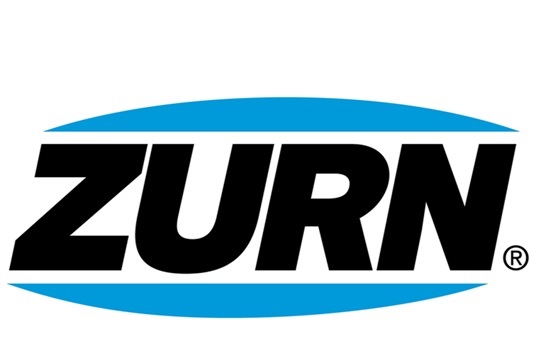Zurn-Wilkins Backflow Preventer Kits and Water Safety
Mar 27th 2024
For over 100 years, Zurn-Wilkins has been a preeminent name in the plumbing industry and a visionary leader in the field of water safety. Over the years, the company has pioneered innovative technology and today hosts 9 locations, 9 divisions, and employs hundreds of people.
Among Zurn-Wilkins’ flagship products are its backflow preventers. Here’s what you need to know about backflow, backflow prevention, Zurn-Wilkins backflow prevention kits, and how they help prevent waterborne illnesses.
What Is Backflow?
Backflow occurs when there is undesired mixing between liquids or gasses within a plumbing system. It typically occurs when there is reverse flowing through a plumbing line that is only supposed to flow in one direction.
Backflow is undesirable for several reasons, all of which have to do with the cross-contamination of a potable water supply. Oftentimes, the risk arises when water carrying pathogens or toxins flows the wrong way in a plumbing system, exposing users to harmful chemicals or to bacteria or viruses that could cause infection.
What Causes Backflow
Backflow typically occurs as a result of pressure changes within a plumbing system. Gravity, vacuums, and other factors can cause pressure changes within pipes. The two main conditions that arise are called back-siphonage and backpressure.
Back-siphonage occurs when there is a sub-atmospheric pressure in supply lines. This can occur with small pipes and high usage rates that result in rapid pressure changes that draw water back into the potable supply.
Backpressure occurs when a higher pressure occurs in the downstream supply line, pushing water back into the potable supply. Pumps and elevation commonly cause backpressure conditions that result in backflow.
What’s the Difference Between an Assembly and a Device?
A common misconception about Zurn-Wilkin backflow prevention kits (and backflow preventers in general) is that backflow assemblies are the same as backflow devices. This is not the case.
Backflow prevention assemblies consist of both inlet and outlet shut-off valves that help prevent backflow. Conversely, backflow prevention devices physically prevent backflow but lack inlet and outlet shutoff valves and test cocks. Consequently, assemblies can be tested once installed but devices cannot be.
What Are the Different Types of Backflow Preventers?
There are five main types of Zurn-Wilkins backflow prevention kits. These are:
●Atmospheric Vacuum Breakers
Atmospheric vacuum breakers are also known as AVBs and contain a float check, check seat, and air inlet. Water flows in, causing the float to rise, which seals off the air inlet. When the flow stops, the float falls and arrests back-siphonage. Concurrently, the air inlet port allows pressures to equalize to prevent a vacuum.
AVB backflow preventers are only effective against back-siphonage and should only be used in situations in which there are no more than 12 hours of continuous pressure per 24 hour period. These devices are also not testable once installed.
●Dual Check Valves
Dual check valves and dual checks with atmospheric ports are special types of valves that can be used in low-hazard situations in which an approved, testable backflow preventer is not required.
●Pressure Vacuum Breakers
Pressure vacuum breakers, also known as PVBs, carry loaded check valves and air inlets that work independently of each other. They also heave resilient seated isolation valves and test cocks.
They are suitable for protection against back siphonage only (like AVBs) but they are suitable in locations with continuous and non-continuous pressure, protect in both low and high hazard situations, and can be tested once installed.
●Double Check Valve Assemblies
Double-check valve assemblies, also known as DC assemblies, contain two independently acting check valves, two resilient-seated isolation valves, and four resilient-seated test cocks. They are only effective in low-hazard situations, but they can protect against both back-siphonage and backpressure and are suitable in situations with both non-continuous and continuous pressure. They can also be tested once installed.
●Reduced Pressure Principle Backflow Assemblies
Reduced pressure principle assemblies, also called RP assemblies, are among the most secure and effective of all Zurn-Wilkins backflow preventer kits.
They consist of two independent check valves as well as a mechanically independent hydraulically operated pressure relief valve located between them.
RP assemblies protect in both high and low hazard situations against both back-siphonage and backpressure, and can be used in settings that are subject to continuous or non-continuous pressure. They can also be tested for serviceability after they are installed.

Need a Zurn-Wilkins Backflow Preventer Kit (or to Repair One?)
In addition to these basic operational principles, many Zurn-Wilkins backflow preventer kits feature additional technological innovations or benefits. For instance, some systems have relief valves for pressure calculations, flooding prevention, automatic water shutoff, and optional abilities to upgrade to connected flow meters.
If you have any questions about Zurn-Wilkins backflow preventer kits or repair kits or parts, please take a look through our collection at the above link or reach out to us directly. You can contact us at 1-833-251-4591 or at Admin@QualityPlumbingSupply.com.

